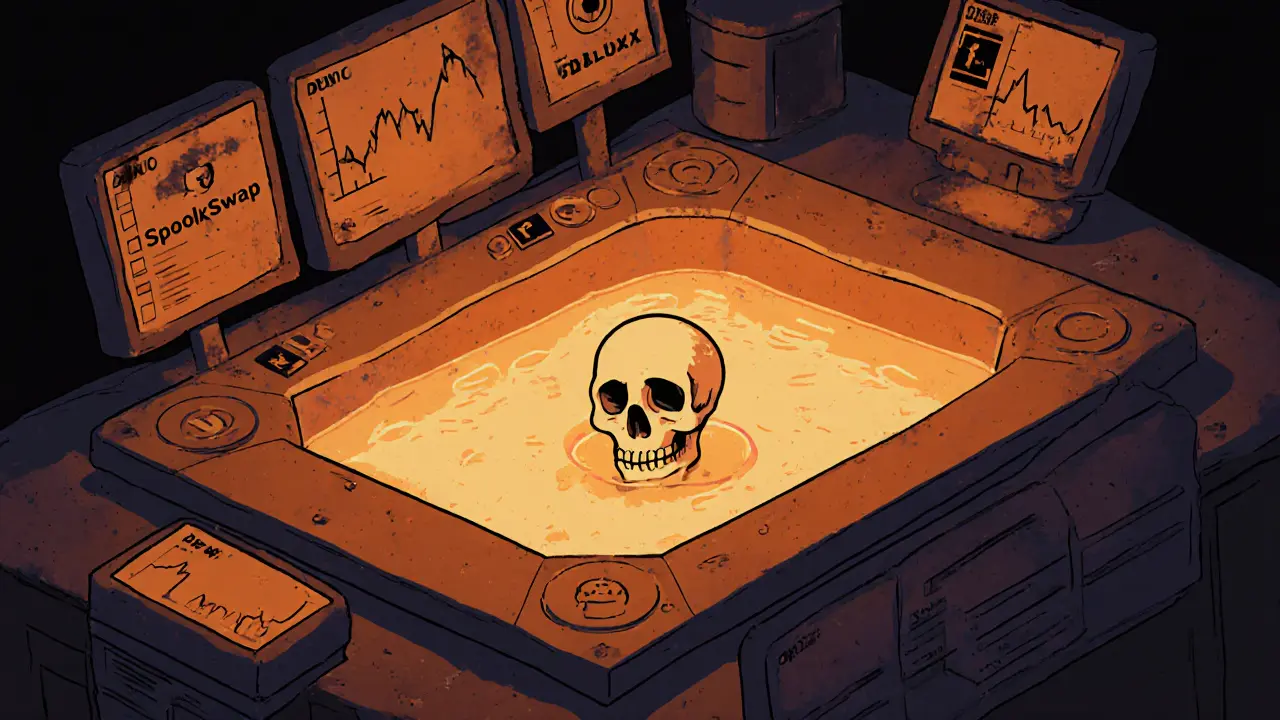SkullSwap: What It Is, Why It Matters, and What You Need to Know
When you hear SkullSwap, a decentralized exchange built for specific blockchain ecosystems, often focused on low-liquidity tokens and community-driven projects. Also known as a niche DEX, it isn't a household name like Uniswap—but for users of obscure chains, it’s one of the few places to trade tokens that won’t show up on Coinbase or Binance. Unlike big exchanges that list hundreds of coins, SkullSwap typically supports just a handful of tokens, often ones that don’t have the traffic or funding to get listed elsewhere. That makes it useful for early adopters—but risky for anyone looking for safety or stability.
SkullSwap relates closely to DeFi exchanges, platforms that let you swap crypto without a middleman, using smart contracts instead of order books. But it’s not like STON.fi or StellaSwap, which are built for major ecosystems like TON or Polkadot. SkullSwap usually runs on smaller chains, sometimes even custom forks of Ethereum or BSC. That means you might face higher gas fees, slower transactions, or even contract vulnerabilities. Many of the tokens traded here have no team, no audits, and no real use case—like SPHYNX or NIHAO, which appear in other posts on this site. If you’re trading on SkullSwap, you’re not just swapping tokens—you’re betting on a project that likely has zero institutional backing.
It also connects to blockchain trading, the act of buying, selling, or swapping digital assets directly on a blockchain without relying on centralized intermediaries. But here’s the catch: most users don’t trade large amounts on SkullSwap. They’re either speculating on new tokens before they hit bigger exchanges, or they’re trying to exit a position after a pump. That’s why volume is usually low, and price swings are wild. If you’ve ever seen a token drop 90% in a day, you’ve probably seen what happens when liquidity dries up on a platform like this.
There’s no magic here. No secret algorithm. No institutional backing. Just smart contracts, community hype, and a lot of risk. You won’t find security audits, insurance funds, or customer support. What you will find are users chasing quick gains—and sometimes losing everything. That’s why posts on this site warn against tokens like KALA, LVN, and CHIHUA. They’re not just risky—they’re often outright scams. And SkullSwap? It’s one of the few places where these tokens still have a market.
If you’re looking to understand why some crypto projects survive on the fringes, why certain exchanges thrive on obscurity, or how to spot the difference between a real DeFi tool and a ghost town with a token, you’ve come to the right place. Below are real-world examples of what happens when you trade on platforms like SkullSwap—what works, what fails, and what you should avoid at all costs.
SkullSwap Crypto Exchange Review: Is This Fantom DEX Worth Using in 2025?
SkullSwap is a nearly inactive Fantom DEX with minimal liquidity, no audits, and zero community support. Avoid it for trading - use SpookySwap or Uniswap instead.
